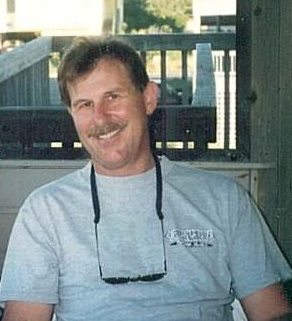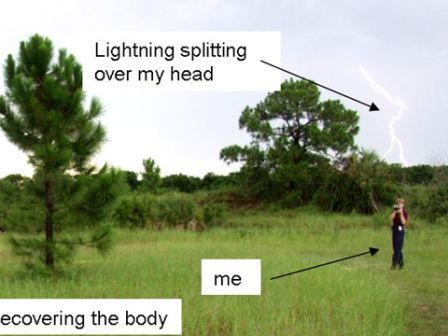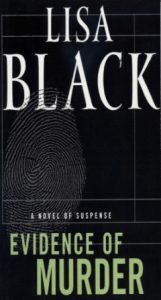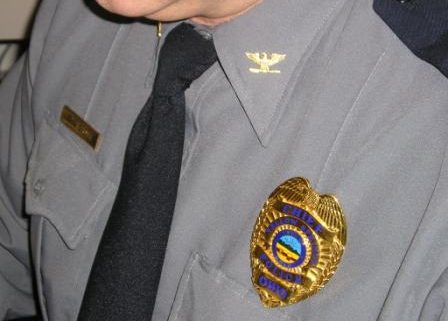Richard Helms retired after a nearly quarter-century career as a professional psychologist in 2002 to teach at a college in Charlotte, NC. He has been nominated three times for the Private Eye Writers of America Shamus Award (Juicy Watusi, 2003; Wet Debt, 2004; and Cordite Wine, 2006). He is also the only author ever to win two Short Mystery Fiction Society Derringer Awards in the same year (2008). His next novel, Six Mile Creek, will be released in March 2010, from Five Star Mysteries.
THE ZOLOFT MADE ME DO IT
Dissecting the Strange and Sad Case of Christopher Pittman
I spent almost sixteen years working directly with the courts as a psychologist in North Carolina-first as the clinical director in a facility for the most violent and dangerous teenagers in the state, and later as the Court Psychologist for Cabarrus, Stanly, Rowan, and Union Counties. Over those years, as is the case for most forensic shrinks, I spent most of my time preparing pre-sentencing evaluations for District Court cases and pre-dispositional evaluations for juvenile court cases. The courts depend heavily on guidance from outside agents because, when all is said and done, judges really don’t like making unilateral decisions. They tend to prefer strong suggestions as to how they should act, which is why-especially toward the end of my active practice, before I retired in 2002-most of my dispositional recommendations tended to find their way verbatim into the court orders.
Because of the role I played in the court process, I tended to feel a strong affinity toward the District Attorney’s Office, and as a result tended to regard defense attorneys in general as regrettably necessary scumbags devoted to keeping on the streets people who rightfully should have had a standing reservation for a spot under the jail.
By the way, we call this condition ‘burnout’ and it contributed strongly to my decision to retire from active practice.
Seven years in academia may have mellowed me a bit, but some things that happen in the hallowed halls still arch my spine and make my back hair prickly. The most recent involves the ongoing attempts by a bunch of attorneys in South Carolina to reduce (or even eliminate) Christopher Pittman’s prison sentence for inverting his sleeping grandparents’ faces with a .410 shotgun back in 2001.
Christopher Pittman – Buzzle.com photo
Pittman, who was 12 years old at the time of the killings, had a lengthy history of family disruption, aggressive behaviors, abandonment by both his mother and father, and commitment to mental hospitals for suicidal and destructive behaviors. In the year prior to the killings, he was placed in a Florida hospital, where he was prescribed Paxil, an antidepressant medication, as a result of suicidal threats after he was rejected by his mother. His father, overwhelmed by the kid’s problems, sent him to live in South Carolina with his grandparents, Frank Pittman and Joy Roberts. Just a week before the killings, Christopher’s father gave him a present-a nice, shiny new .410 shotgun-and showed him how to use it.
In the interim, because Paxil was not available at the local pharmacies (according to most sources on the case), Pittman’s doctor changed his medication from Paxil to Zoloft (generic name: sertraline). Pittman reported negative side effects to the Zoloft, mostly involving somatic symptoms such as a burning sensation on his right side. Pittman’s sister claimed that he displayed ‘manic’ behaviors. His doctor increased the dosage.

In the day or so leading up to the killings, Pittman got into a fight on the school bus, made threats to other children, and disrupted a church service. In response, Frank Pittman whipped Christopher with a belt and sent him to bed.
Reports from forensic evidence and interviews indicate that Christopher waited in bed with the shotgun until he knew his grandparents were asleep, and then entered their bedroom, shot his grandfather in the mouth, and shot his grandmother in the side of the head. He then set fire to the house, took the shotgun and his grandparents other guns, his dog and some money, and fled to the next county in his grandparents’ car.
When stopped two counties over a couple of days later, Christopher claimed that a ‘large black man’ had invaded his grandparents’ home, killed them, and that he-Christopher-had managed to escape. Authorities immediately suspected the story to be false. When confronted with his fabricated story, Pittman admitted the killings, and added, “They deserved it.”
At his trial, the prosecution portrayed Pittman as the troubled youth that he likely was. They cited a lengthy history of resentment over being disciplined, possibly as a result of his general feelings of resentment toward his parents, who had repeatedly rejected and abandoned him. They had Pittman tested by a psychiatrist, Dr. Pamela Crawford, who testified in the case that Pittman was competent, and that he did understand the difference between right and wrong-thereby fulfilling the requirements to proceed in the case.
Dr. Julian Sharman, a psychiatrist for the South Carolina Division of Juvenile Services, testified that Pittman had put a lot of time into making a plan to “get rid of” his grandfather, and that-in retrospect-he felt no remorse for his acts, and felt that his grandparents “…had asked for it.”
More importantly, two hunters who encountered Pittman in the woods on the day following the shootings reported that he had been “…quiet and calm, and they could understand everything that he said to them.”
All of these findings are important, since the defense attorneys in Christopher Pittman’s case attempted to depict him as manic, nearly psychotic at the time of the shootings, and even driven by Zoloft-fueled voices in his head to kill his grandparents, burn their house, steal their weapons, dog, and car, and flee potential capture.
The jury found Pittman guilty, and the judge in the case sentenced him to 30 years in prison for the killings.
After he was placed in the Youth Prison System in South Carolina following his conviction, Pittman is reported to have continued a pattern of aggressive and violent behavior-despite being either removed from medication or being appropriately medicated-which included racial slurs made toward other inmates, creating and secreting homemade weapons in his cell, and making threats to rape other inmates.
Christopher Pittman’s case has become notorious for several reasons. First, he is among the youngest men (he’s now 21) serving time in prison after committing murder as a child. In fact, South Carolina is one of only nine states in the US where a child of 12 can be bound over for trial as an adult for capital crimes. (In my own state of North Carolina, you can be bound over for trial in adult court if you commit your crime on or after your 13th birthday.)
The second reason for this case’s notoriety is Pittman’s attorney’s use of the so-called ‘Zoloft Defense’, as a means of explaining, excusing, and perhaps exonerating Pittman of responsibility for his behavior.
The appellate court has already addressed the first factor, finding that the sentence was entirely within the authority of the court and, in fact-when compared to other cases-seems particularly lenient.
The so-called Zoloft Defense, however, is particularly interesting from a psychological point of view. Zoloft (sertraline) is one of a number of different drugs that are included in a class called serotonin selective reuptake inhibitors. I typically take over an hour in my classes to describe the action of the neuron (the basic building block of the central nervous system), and I certainly don’t want to do so here, for fear of rendering Lee’s readers comatose. However, to put it as simply as possible, the entire nervous system runs on an electrochemical basis, communicating by specific molecules called neurotransmitters, which flow between the most basic neural cells (neurons) to send messages. The neurons themselves stimulate the release of these neurotransmitters using an electrical charge created by mixing two primary elements of opposite charges (potassium and sodium).
One of the neurotransmitters is serotonin, which is sort of a ‘feel-good’ chemical. It tends to be manufactured in the midbrain, and then is distributed throughout the cerebral cortex (that part of the brain we tend to see most often in pictures). There are over 100 billion neurons in the cortex, and a huge number of them run on this neurotransmitter called serotonin.
When there is too little serotonin in the neurons that distribute it, we tend to feel depressed. When there is too much, we may have symptoms of mania (feeling extremely stimulated, irritabe, having lots of uncontrollable thoughts or ideas, angering easily, and perhaps even having delusions or hallucinations).
Serotonin selective reuptake inhibitors (SSRI’s )like Zoloft (sertraline) act to regulate the amount of serotonin flowing between neurons, and by doing this they make us feel better-happier if we are depressed, and more mellow if we are manic.
Please note that this is a very simplistic description of the process by which both neurons and SSRI medications work, but I don’t have pages and pages of space to use to explain in detail.
Most psychiatrists or pediatricians do not prescribe these medications lightly. There should be significant symptoms of a psychological disorder present before such meds are offered, and his history indicates that this was certainly the case with Christopher Pittman.
There is some scientific evidence that might have fueled (even if it doesn’t substantiate) the allegations of
Pittman’s attorneys that the Zoloft he took caused him to kill his grandparents. They seem to base their assertions on research findings that indicate that suddenly ceasing a daily dosage (without ‘weaning off’ the drug) can result in manic behaviors and increase the potential for suicidal thoughts and acts. One expert witness at trial in this case, Dr. Ronald Maris, testified that “…the same mechanisms that could trigger a child taking Zoloft to commit suicide could also trigger one to harm another person.”
Triggering behavior, however, does not constitute causing that behavior. You can pull the trigger on a pistol, but nothing is going to happen if the gun is not first loaded. Christopher Pittman, based on the social history that is available to us, was a loaded gun already endowed with a hair trigger long before he was given psychotropic medications.
Invariably, when I discuss in my college courses the positive role that SSRI medications play in the treatment of various disorders, my students ask some variation of the same question: “But why does it cause people to commit suicide, then?”
The notion that SSRIs cause suicide is based largely on anecdotal data that was printed in the popular press almost twenty years ago, mostly involving another SSRI called Prozac (fluoxetine). There appeared to be a correlation between the number of adolescents prescribed Prozac, and the number of adolescents to attempted or actually committed suicide. The factor that was ignored in these reports was that a very large number of those adolescents were already depressed, and already at high risk for suicide, before they took the medications.

Depression is largely a biochemical event, marked by decreased levels of serotonin and norepinephrine in the brain at key sites associated with mood. It is diagnosed inferentially, which means that we don’t measure the level of neurotransmitters in the brain, but rather we observe the behavior of the client and infer from that behavior that he/she is depressed.
There are basically three symptoms we look for to make a diagnosis of depression: dysphoria, anhedonia, and psychomotor retardation. Dysphoria is an overall sense of sadness or despondency. Anhedonia is a lack of enjoyment in most presumably enjoyable activities. Psychomotor retardation refers to a reduced amount of physical activity, and reductions in measures such as reaction time, reflexes, and the like, which indicate reduced response time in the central and peripheral nervous systems.
Many adolescents who are diagnosed with depression are already having suicidal thoughts, but they don’t act on those thoughts because they don’t have the physical energy or motivation to do so. Now, here is the part where SSRI medications come in. SSRIs aren’t like valium or amphetamines. They don’t go to work as soon as you take them. In general, it takes about two to three weeks for these medications to build up to therapeutic levels in the bloodstream before you begin to see an appreciable overall effect on mood and behavior.
Here’s the problem, though: SSRI medications-like Zoloft-appear to impact psychomotor retardation before they impact dysphoria and anhedonia. After as little as a few days of taking these medications, people begin to feel a lot more energetic, but they still have dysphoric feelings, which may include thoughts of suicide. We have, in effect, taken a lethargic suicide who does not have the energy to act on his impulses, and turned him into an energetic suicide who is all too willing to give in to those impulses.
In cases like this, we say that the psychomotor retardation is inhibiting the suicidal impulse. When the potentially suicidal adolescent becomes more energetic, because he has taken Zoloft (or any SSRI), the most damning thing we can say about the medication is that it has disinhibited an impulse that was already there.
That’s why good clinicians and psychiatrists clearly advise parents of children and adolescents who are taking these medications not to allow them out of sight for several weeks after beginning the meds, to help reduce the likelihood of suicidal acts.
So, let’s go back to the statement made by Dr. Ronald Maris, in which he said that “..the same mechanisms that could trigger a child taking Zoloft to commit suicide could also trigger one to harm another person.”
I’m going to submit that the word ‘trigger’ here is a bad choice. A better statement might have been that, “The same mechanisms that could disinhibit suicidal behavior in a child taking Zoloft, could also disinhibit harmful behavior in another person who already has a predisposition to harm others.”
In other words, the Zoloft was not responsible for Christopher Pittman killing his grandparents. He likely already possessed all the psychological dysfunctions necessary and sufficient to enable him to carry out such an act. The Zoloft might have made it easier for him to commit the murders, by disinhibiting the notion he already had to kill them. It cannot be said, however, that Zoloft caused the murders. Zoloft-or any SSRI, for that matter-can’t make you do something that you wouldn’t do otherwise, given sufficient motivation and provocation.
So, seven years after Christopher Pittman was tried and convicted for the murders of his grandparents, his new attorneys appear ready to go to the well yet one more time, and at least this time they appear not to be doing so behind the boogeyman of the Zoloft Defense.
Pittman’s original defense team half a decade ago was comprised largely of civil attorneys who specialized in suing pharmaceutical companies, and it appears that they had anticipated that they would be able to convince a South Carolina jury of their claim that-in Pittman’s case-‘the Zoloft made me do it’.

After they failed, they filed appeals that addressed virtually every possible error the court might have made in its administration of the prosecution and defense of the case. The three-judge panel rejected their appeals in 2006, presumably ending the Pittman case.
Now, a new set of attorneys are looking into filing a new appeal, based on questionable reports that the prosecution in the Pittman case did not allow the original defense team adequate time to field a reported plea agreement. In his most recent court appearance, Pittman stated that, if he had been given the opportunity , he would have agreed to a deal that would have allowed him to plead guilty to lesser charges of manslaughter, in return for a sentence between 2 and 30 years, with opportunity for parole.
Note, in this hearing he never stated in any way that he was innocent of the charges. He simply stated unequivocally that he would have been happy to cop a plea on them.
The problem? The original prosecutors in the case have steadfastly maintained that they never offered any such plea, and in fact never intended to do so!
I don’t know at this point whether Pittman will get a new trial. I didn’t work with Christopher Pittman. I had no connection with his infamous case. However, I did work over the years with my share of teenaged murderers, some of whom committed their crimes as young as Pittman was when he discharged his shotgun into his grandparents’ sleeping faces. I’ve evaluated, interviewed, and treated dozens of Christopher Pittman’s in my time. My experience has been that each and every one of them had little trouble finding convenient excuses for committing their horrible acts. Not one of them sat across from me-even once-and said, “You know, I did a really bad thing. I was completely responsible, and not a day goes by that I don’t regret the pain, suffering, and horror that I inflicted on my victims. I will have to live with this guilt for the rest of my days.”
That would have been nice. Hearing something like that would have given me a little hope for my clients. Unfortunately, it never happened. Instead, they kept providing excuses for their criminal behavior-any explanation that didn’t put them squarely in the wrong.
What happened in Christopher Pittman’s life that helped shape him into a pre-teen monster that could commit the crimes he did was regrettable. No child should have to endure the neglect and abandonment that he did. But, in the end, we are responsible for ourselves. We have to shoulder the blame for the things we do in life. Nobody is deprived of free will by their past. Pittman’s father and mother didn’t pull the trigger on that shotgun. Zoloft didn’t pull the trigger on that shotgun. Christopher Pittman pulled it. Then he did it again. Then he set fire to the house, drove off into the night with his dog and his grandparents’ money in his grandfather’s car, and when he was caught two days later he told the authorities that his grandparents deserved what they got.

I tend to believe that Christopher Pittman deserves what he’s gotten, too. I tend to believe that the state of South Carolina is a little safer tonight without Pittman roaming around it. I think it’s time to put this case to bed.
Visit Richard Helms here.

























